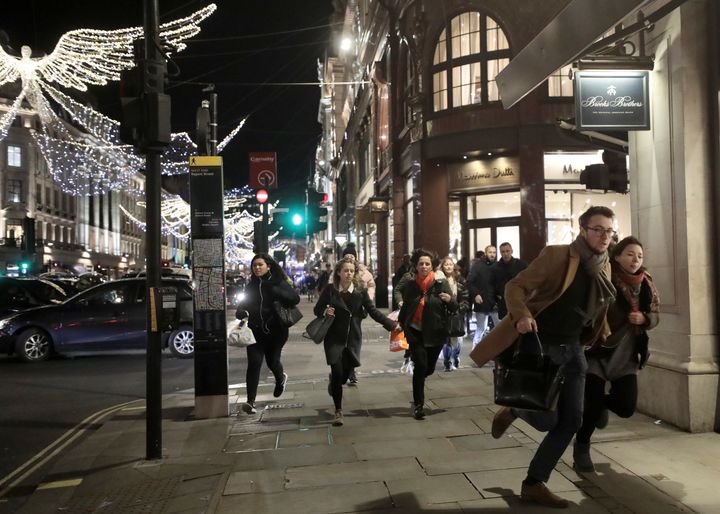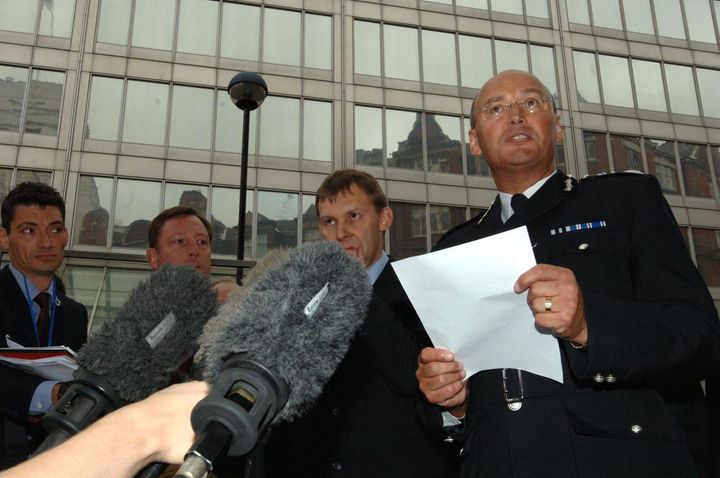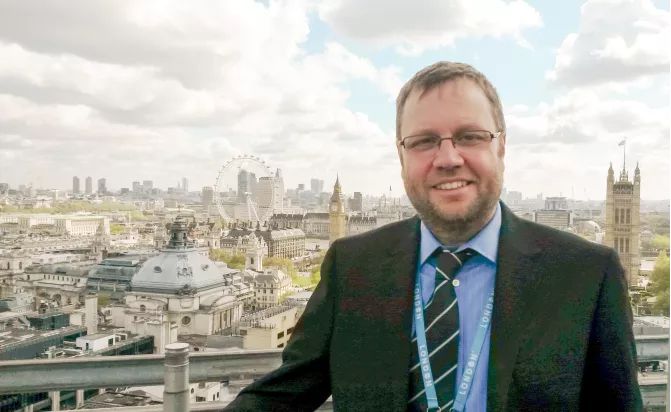A week ago today an “altercation” between two men at Oxford Circus Tube station sparked mass evacuations, a huge armed police response and lit up social media with panic, rumours and occasionally, some solid facts.
One man who was desperately trying to be heard above all the noise was Ed Stearns, Head of Media at the Metropolitan Police, and the person ultimately responsible for what is, for many people, the first port of call for information during a potential terrorist incident in London - the force’s Twitter account.

“We are very aware that we have a responsibility to get out as much info as we can, as quickly as we can, but it’s got to be correct as well,” Stearns tells HuffPost UK.
Less than a decade ago reporters would gather under the revolving sign of Scotland Yard awaiting word from a police spokesperson on major events, perhaps also periodically refreshing the Met Police website on an early smartphone.
The public, ever-eager for information, would generally wait for word from the media.

But a lot has changed in that time. The press conferences at Scotland Yard are still held, but social media has helped fill the gap between an incident happening and an official or verified version of events being presented - usually not with verified facts as aptly demonstrated last week when rumours of gun-fire swept Twitter.
For Stearns and his team of around 30 people who provide 24-hour coverage of events in the capital, social media can be a double-edged sword.
“During a major incident it’s immensely useful that we can get messaging out directly to people that are in an incident quickly,” he says.
“The strategic intention of the communication is saving life, providing reassurance to the public and aiding the investigation as that goes forward.”

Stearns’ team follows a relatively standard procedure during a major incident - acknowledge the event and reassure the public that police are on the ground:
Issue pertinent advice:
Release information as it is confirmed:
And declare the situation over:
This is good in theory but in the crowded virtual space of Twitter, the Met Police account, even with its 1.1 million followers, can find itself vying for attention with thousands of others, none of which are privy to the information Stearns and his team have.

“Unverified rumours being out there are not helpful to a police operation, that’s for sure,” Stearns says.
“Rumours are difficult because you can’t possibly respond to every rumour, because often we don’t know if it’s true, so it’s better for us to say please come to us for verified information.”
Last Friday’s incident was notable for the input of celebrities such as Russell Brand and pop star Olly Murs, who found himself live-tweeting in an understandably panicked manner from Selfridges on Oxford Street.
Both drew criticism for potentially stoking panic, with Piers Morgan even going so far as to say Murs “could have put people in more danger”.
Stearns plays down the role Brand and Murs could have had with causing unnecessary panic saying it’s been “overblown”.
“I think people were just reacting to what they were hearing on the streets as much as anything,” he adds.
“Probably the most effective tweet they can put out is follow @MetPoliceUK for latest information and retweet what we’re putting out”
- Ed Stearns, Head of Media at the Metropolitan Police
Regardless, he does still have some advice for anyone with a large social media following who finds themselves caught up in such a situation.
“One hundred percent anyone with a large following, if they’re in an incident, probably the most effective tweet they can put out is follow @MetPoliceUK for latest information and retweet what we’re putting out.
“If you’re in Manchester say follow Manchester Police for information, if you’re in Liverpool, follow Merseyside Police.
“It’s the police that have that verified information and who will put out the messaging that could save lives.”
And it’s not just celebrities and the public who can confuse matters, occasionally the media makes mistakes too.
A tweet sent by the Daily Mail last Friday reported a lorry had “ploughed into pedestrians” mistakenly quoting another tweet that was sent weeks before the actual incident.
“I don’t want to criticise a particular source,” Stearns says.
“I used to work on newspapers and we would have to be pretty sure of our facts before we put something out now. I’m not sure the same rules are applying now to that extent.
“But I’m sure any news organisation that puts out something wrong will reflect on that. After Westminster there were early reports there were more gunman out there, all this speculation - it doesn’t help but I hope news organisations learn from what they put out there and what they do.”
Mail Online did indeed reflect on it and issued an apology, which read:
As in any major incident these days, social media was awash with confused reports from Oxford Circus tonight, many of which turned out to be inaccurate.
It is the job of the mainstream media to strike a balance between reflecting what is being reported from the scene without spreading false facts.
And, despite the fast-moving situation, reporting this particular information that was not in line with the mass of eye-witness reports was a grave error.
The failure was swiftly spotted internally and the story containing the inaccurate information was only live for exactly seven minutes.
Nevertheless MailOnline deeply regrets that it was ever published at all, however briefly, and has instituted an urgent inquiry to establish exactly how it happened.
The lesson from all of this is of course that ultimately the police and security services are the only ones who know for sure what’s going on during a major event.
″[When an incident occurs] something called a Gold is appointed, a Gold Commander and a team set up to run that incident but obviously they’re not going to be there for, depending on what time of day it is, it can take between 20 minutes and an hour to set that system up,” Stearns says.
“In the meantime it’s run by the force control room - there’s a team inspector who’s running London really and we’re liaising with that control room to get information out as soon as we can.
“I’ve revamped our major incident communications over the last three years and at the heart of this has been making it part of the policing operation, not a bolt on.
“Communication can save life and so that’s a really important part of the operation.”
“Social media gives us our own channel - it gives people a place to go”
- Ed Stearns, Head of Media at the Metropolitan Police
And it’s not just a one-way street - despite all the unwelcome rumours a lot of the information on social media is incredibly helpful to police.
“Obviously we’ve got intelligence teams looking through social media, but having people come to us that way is really useful - any way that we can get witnesses to get information to us, their details to us is useful. In a major incident we will get dozens of photos and video uploaded which might help us with the investigation in the early stages,” Stearns says.
On balance Stearns sees social media as a definite plus for policing.
“It’s given us a platform so clearly we can communicate directly with the public in a time of crisis. Traditional media is still really important to us because they amplify the messages and also provide more information to the public,” he says.
“Social media gives us our own channel - it gives people a place to go. Our research has found that people will retweet us more than other sources so they’re obviously seeing us - as you would hope - as the trusted source and the place to go for information.”
